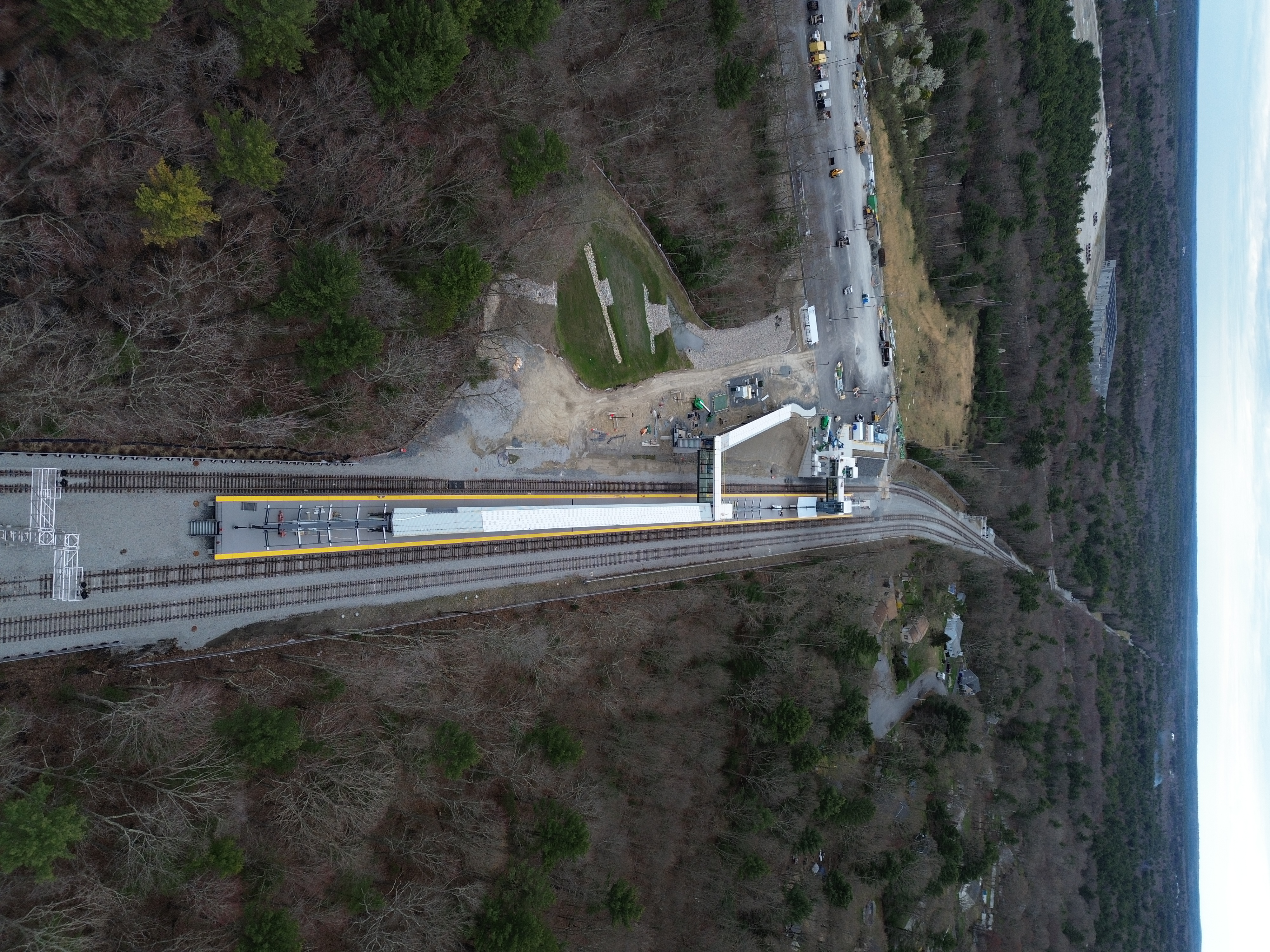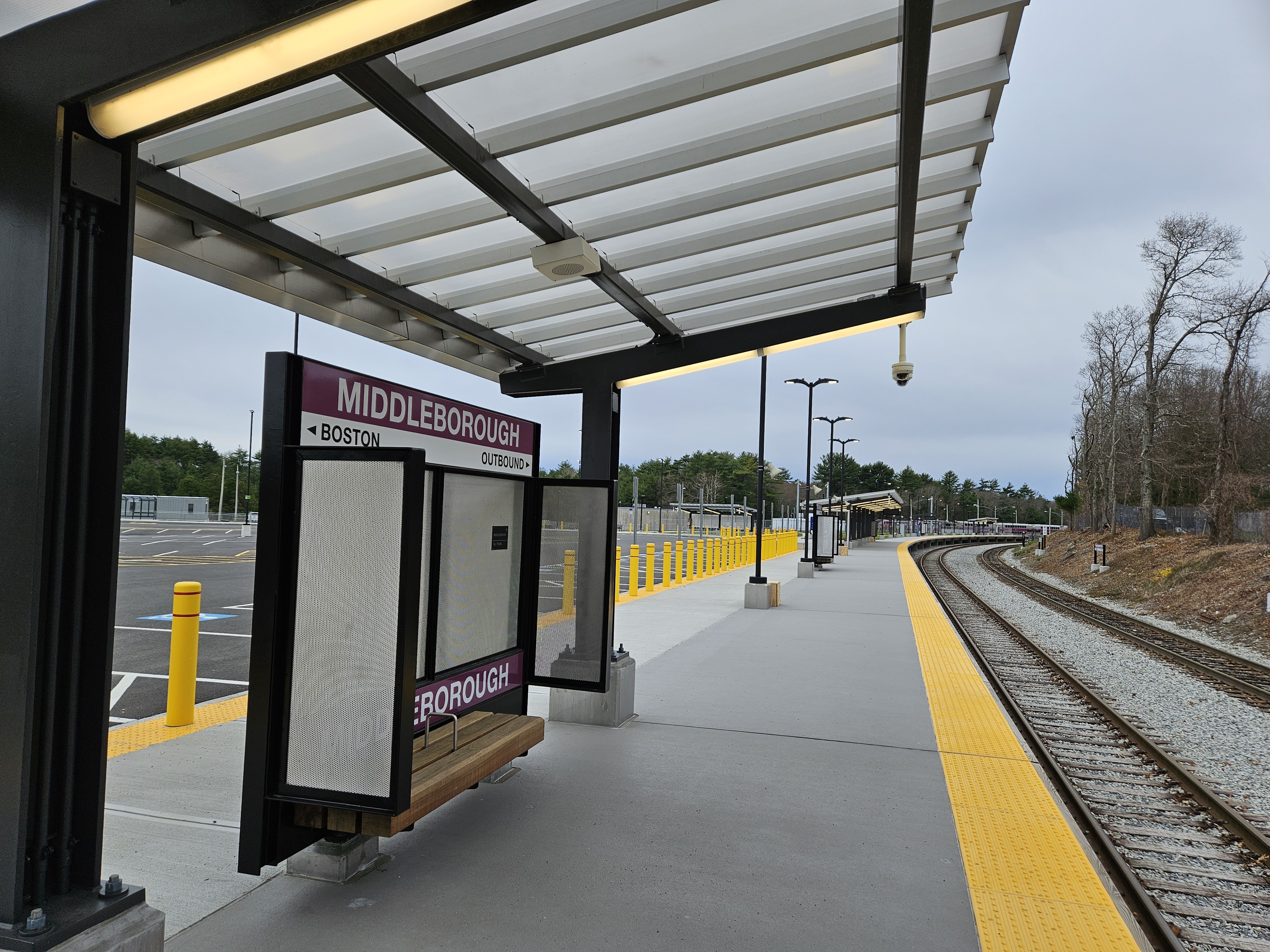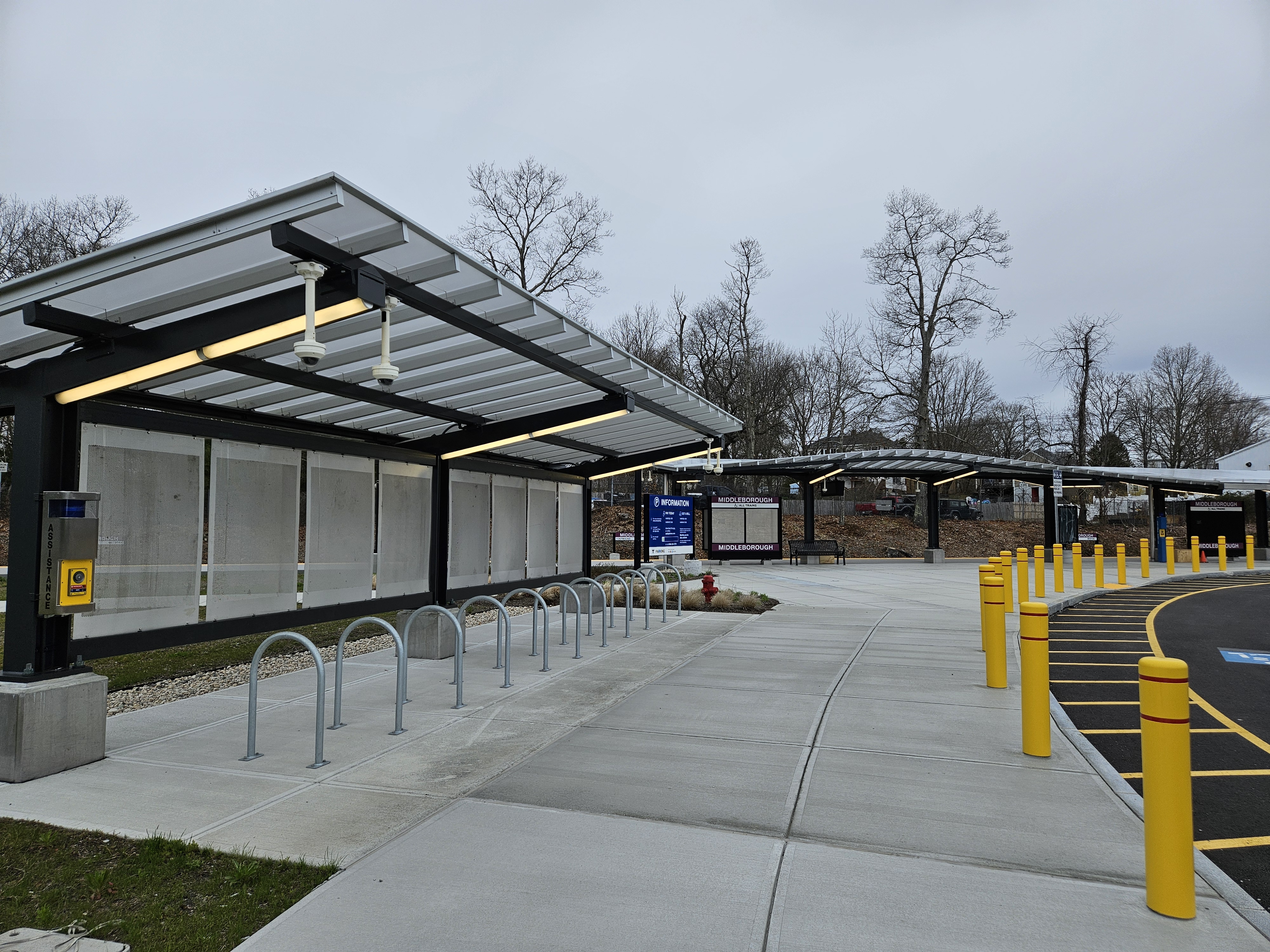You are using an out of date browser. It may not display this or other websites correctly.
You should upgrade or use an alternative browser.
You should upgrade or use an alternative browser.
Fall River/New Bedford Commuter Rail (South Coast Rail)
- Thread starter JoeGallows
- Start date
Once you get past 495, doesn't the population tend to get poorer
Yeah but they aren't the ones who ride the CR.
TheRatmeister
Senior Member
- Joined
- Sep 23, 2023
- Messages
- 1,282
- Reaction score
- 2,474
That's not what the data says. Yes, CR riders are on average richer than MBTA riders as a whole. But the biggest part of this difference comes from middle to upper middle income families earning $75,000-$93,000 per year. This makes sense, as this is the main demographic that would be commuting into Boston in the first place, people who have jobs in the biotech, university, healthcare, finance, or other sectors highly concentrated within Boston.Yeah but they aren't the ones who ride the CR.
But of course, it should be noted that to some extent people are self-selecting here. People than can pay $250-300+ per month upfront for a pass are buying the passes, and the ones who can't aren't. Lowering transit fares could increase the accessibility of higher-paying jobs in Boston for less well off residents in further out suburbs and allow them to potentially even save money on car-related expenses.
For reference, these are the charts the T used last 2 times they did a Title VI analysis of the CR fare system. I can't find the full presentation anymore, but those high non-minority / non-low-income numbers are what catches the T every time on a Title VI equity analysis. (It did get quite a bit better on the 22 data, but that may reflect higher car ownership and usage during COVID)


Unless it's packaged as part of a much larger overall fare restructuring, or the T changes it's policy to look at opportunity equity/ population (which I'm not entirely sure is within its ability to do so,) it's hard to see how lowering fares on the CR wouldn't decrease fares less for protected populations.the MBTA must ensure that any fare increase does not increase fares more for protected populations than all riders, and that any fare decrease does not decrease fares less for protected populations than for all riders.
Last edited:
JeffDowntown
Senior Member
- Joined
- May 28, 2007
- Messages
- 4,744
- Reaction score
- 3,562
But isn't the whole point of Regional Rail to change the ridership mix on the Commuter Rail routes?For reference, this is the chart the T used last time they did a Title VI analysis of the CR fare system. I can't find the full presentation anymore, but those high non-minority / non-low-income numbers are what catches the T every time on a Title VI equity analysis.
Unless it's packaged as part of a much larger overall fare restructuring, or the T changes it's policy to look at opportunity equity/ population (which I'm not entirely sure is within its ability to do so,) it's hard to see how lowering fares on the CR wouldn't decrease fares less for protected populations.
View attachment 49545
If you don't implement a fare structure that attracts the different mix of riders, Regional Rail will fail. Regional Rail is not about the current riders, it is about the non-users today.
I don't disagree, but that's a fundamental issue with the Title VI policy as currently formulated. The system allows you to include potential riders, but it fundamentally looks at what is, not what could be. The FTA allows you to do a title VI analysis by either population geography (minority census blocks) or ridership. The T has, since inception, used ridership, which I do actually think is the right choice. My understanding is that when it came into force, it functionally froze things in amber, as the DB/DI analysis only looks back at the ridership impacted before the change.But isn't the whole point of Regional Rail to change the ridership mix on the Commuter Rail routes?
If you don't implement a fare structure that attracts the different mix of riders, Regional Rail will fail. Regional Rail is not about the current riders, it is about the non-users today.
It doesn't really let you do things like "smooth the zone 1 to 1A cliff" without creating that DB/DI finding, because today that would disproportionately benefit non-protected populations like folks commuting from Winchester and Belmont, not the EJ community up in Lynn. To overcome that you'd have to do things in stages (to stay below the threshold), or as a major package, because ridership is fungible. For example, by providing additional Regional Rail service to EJ communities would count as a major service change. The catch is, a lot of the EJ CR ridership is already in 1A, (Fairmont) so you'd have to get creative with the fare /service package. That, or accept the DB/DI finding but include enough mitigation or justification in it to make it worthwhile.
TheRatmeister
Senior Member
- Joined
- Sep 23, 2023
- Messages
- 1,282
- Reaction score
- 2,474
And this is the big caveat. A reformed fare structure wouldn't just mean taking $1 off every fare zone, for example. It would mean changing fare zones for the lower income cities served by the network like Lynn, Fitchburg, Brockton, Worcester, Leominster, etc to provide lower fares. It would mean allowing less frequent riders to connect to an MBTA bus without being charged extra. It would mean expanding the half-fare program to the Commuter Rail (Which as far as I can tell has basically no low-income fare program currently).Unless it's packaged as part of a much larger overall fare restructuring
And there is no shortage of mitigation options. Increasing funding to local transport agencies to provide better feeder services, building new stations and prioritizing upgrades to existing stations to better serve low income cities and neighborhoods, and of course there's always the 'brute force' approach of just funding rapid transit expansions. (Or 'Rapid transit' in the case of the Fairmount Line)That, or accept the DB/DI finding but include enough mitigation or justification in it to make it worthwhile.
HelloBostonHi
Senior Member
- Joined
- Apr 17, 2018
- Messages
- 1,470
- Reaction score
- 4,063
The EGE
Senior Member
- Joined
- Jun 29, 2013
- Messages
- 1,744
- Reaction score
- 4,597
On another forum, someone complained that East Taunton station doesn't have any pedestrian access from the southwest side of the tracks, and likened it to Anderson/Woburn. While I do agree that the lack of access is unfortunate for the few people who live off Plain Street, it's amazing just how different it is from Woburn. East Taunton is entirely a park-and-ride station - it's just 2.5 miles from downtown Taunton, yet there is no safe way to walk or bike to the station. (Route 140 doesn't even have sidewalks.) The one bus route that will be extended to the station will take 25 minutes to reach the station from downtown.


themissinglink
Senior Member
- Joined
- Jan 13, 2018
- Messages
- 1,405
- Reaction score
- 3,673
On another forum, someone complained that East Taunton station doesn't have any pedestrian access from the southwest side of the tracks, and likened it to Anderson/Woburn. While I do agree that the lack of access is unfortunate for the few people who live off Plain Street, it's amazing just how different it is from Woburn. East Taunton is entirely a park-and-ride station - it's just 2.5 miles from downtown Taunton, yet there is no safe way to walk or bike to the station. (Route 140 doesn't even have sidewalks.) The one bus route that will be extended to the station will take 25 minutes to reach the station from downtown.
Taunton is really getting screwed over with the Middleborough routing, especially since the East Taunton stop had to get relocated south of Cotley junction instead of the previously planned location north of the junction. Phase 2 is essential for Taunton because of the planned stop close to downtown, but I'm not getting my hopes up since there's been no word on Phase 2 since like 2017.
Last edited:
F-Line to Dudley
Senior Member
- Joined
- Nov 2, 2010
- Messages
- 9,513
- Reaction score
- 10,257
The north-of-Cotley station siting at Mozzone Blvd. at least would've had the adjacent big-box shopping center for some TOD potential. But that assumes that the locals are capable of executing on TOD. The 2009 Corridor Plan tried to do ambitious mixed-use infilling with housing, new sidewalk buildouts, and greenspace...but all of that disappeared from the plans by the 2013 FEIR. While there were/are still empty lots around the shopping center ripe for infilling, the environs are car-centric to the max with seas of parking, poor sidewalk coverage, the same disconnection from Plains St. residential, and the same inferior bus connection. Either site makes the Kingston sand pit look borderline progressive on TOD. So I doubt the ridership needle moved much with the flip to the sparser surroundings south of the junction. It would be 90% park-and-rides at either site, and that's all the locals seem to be shooting for nowadays.Taunton is really getting screwed over with the Middleborough routing, especially since the East Taunton stop had to get relocated south of Cotley junction instead of the previously planned location north of the junction. Phase 2 is essential for Taunton because of the planned stop close to downtown, but I'm not getting my hopes up since there's been no word on Phase 2 since like 2017.
The 2013 FEIS for Phase II projected 400 daily boardings for East Taunton and 670 daily boardings for the downtown stop at Dean St. At Phase I frequencies the East Taunton boardings are likely to suffer a little.
Last edited:
Commonwealth has blown several opportunities to push back against Army Corps. Phase II without a viaduct becomes reasonable.The north-of-Cotley station siting at Mozzone Blvd. at least would've had the adjacent big-box shopping center for some TOD potential. But that assumes that the locals are capable of executing on TOD. The 2009 Corridor Plan tried to do ambitious mixed-use infilling with housing, new sidewalk buildouts, and greenspace...but all of that disappeared from the plans by the 2013 FEIR. While there were/are still empty lots around the shopping center ripe for infilling, the environs are car-centric to the max with seas of parking, poor sidewalk coverage, the same disconnection from Plains St. residential, and the same inferior bus connection. Either site makes the Kingston sand pit look borderline progressive on TOD. So I doubt the ridership needle moved much with the flip to the sparser surroundings south of the junction. It would be 90% park-and-rides at either site, and that's all the locals seem to be shooting for nowadays.
The 2013 FEIS for Phase II projected 400 daily boardings for East Taunton and 670 daily boardings for the downtown stop at Dean St. At Phase I frequencies the East Taunton boardings are likely to suffer a little.
F-Line to Dudley
Senior Member
- Joined
- Nov 2, 2010
- Messages
- 9,513
- Reaction score
- 10,257
Per Keolis employees on RR.net, the signals on SCR are still not operational. There's a freight bulletin out for CSX and Mass Coastal to outright ignore the signal readouts and continue operating as if it were dark territory given that field techs apparently have a lot of debugging left to do with the system. No T test trains are operating for the foreseeable future; they haven't even started signal tests, let alone crew qualifications.Project Manager Jean Fox presented an update on status during the Cape Cod Chapter, NRHS banquet last June. I noted her presentation then did not include a planned opening date, so I asked during the Q&A. She said it was hoped to be late "this year" (2023), but it was dependent on PTC testing. Any defects found could lead to a delay of months, so early 2024 was more likely she said last June. Slip sliding away...
If they haven't even started live testing reps as of June it's almost impossible that they're going to make service starts by Fall 2024. This is increasingly looking like Winter 2025 or later.
Yup. Slip sliding away. But I'm sure the project management team is being held accountable.Per Keolis employees on RR.net, the signals on SCR are still not operational. There's a freight bulletin out for CSX and Mass Coastal to outright ignore the signal readouts and continue operating as if it were dark territory given that field techs apparently have a lot of debugging left to do with the system. No T test trains are operating for the foreseeable future; they haven't even started signal tests, let alone crew qualifications.
If they haven't even started live testing reps as of June it's almost impossible that they're going to make service starts by Fall 2024. This is increasingly looking like Winter 2025 or later.
I wonder how much the cost overruns have been with these delays...
HelloBostonHi
Senior Member
- Joined
- Apr 17, 2018
- Messages
- 1,470
- Reaction score
- 4,063
Test trains will start on June 17th according to an update posted today by the MBTA.
They are hosting two public meetings tomorrow where I'm assuming they will be announcing the start of test trains to the public for ROW safety.
They are hosting two public meetings tomorrow where I'm assuming they will be announcing the start of test trains to the public for ROW safety.
"MBTA general manager to break agency’s silence on South Coast Rail Thursday
"Phil Eng will speak at Bristol Community College in Fall River and later at the New Bedford Whaling Museum, two months after the MBTA delayed the project without announcing a new timeline."The general manager of the MBTA is taking the unusual step of visiting New Bedford and Fall River on Thursday to make an announcement about South Coast Rail..."
Full New Bedford Light article here.
And from a project email received yesterday:
Please Join General Manager Phil Eng at
South Coast Rail Public Meetings
Thursday, June 13, 2024
FALL RIVER - 5:30 PM
Bristol Community College
NEW BEDFORD - 7:30 PM
Whaling Museum
South Coast Rail Public Meetings
Thursday, June 13, 2024
FALL RIVER - 5:30 PM
Bristol Community College
NEW BEDFORD - 7:30 PM
Whaling Museum
You are invited to join MBTA General Manager Phil Eng and the South Coast Rail (SCR) team at a public meeting on the project. Please join us on Thursday, June 13, in Fall River or New Bedford. The same update will be presented at both meetings.
The Fall River meeting will be held at 5:30 PM at the Bristol Community College campus, building G, located at 777 Elsbree St, Fall River, MA 02720. Parking is available in Lot 12.
The New Bedford meeting will be held at 7:30 PM at the Whaling Museum, located at 18 Johnny Cake Hill, New Bedford, MA 02740. Free parking is available at the Elm Street Parking Garage at 51 Elm Street.
Visit the Fall River event page or the New Bedford event page.
"New South Coast Rail timeline: May 2025
"The MBTA’s general manager and project manager provided the first update in months: Tracks are certified, testing to begin Monday and the agency is confident it can meet its new deadline."Editor’s note: This is a developing story and will be updated following the public meeting in New Bedford.
"South Coast Rail will start in May 2025, the MBTA announced on Thursday in the first update since the project was delayed for the second time two months ago..."
Full New Bedford Light article here.
From The New Bedford Light Facebook page:
"Join The New Bedford Light for a Community Conversation about what's next for transit on the South Coast at 6 p.m. on June 18 in the third floor meeting room at the downtown branch of the New Bedford Public Library. Admission is free, but please register here: https://forms.gle/EKkGfyvRWNxaLhj97
"Participants include: The New Bedford Light transportation reporter Grace Ferguson, State Rep. Bill Straus, officials from the SRTA, the City of New Bedford, South Coast Rail, and the Realty Association of Southeastern MA."
"Join The New Bedford Light for a Community Conversation about what's next for transit on the South Coast at 6 p.m. on June 18 in the third floor meeting room at the downtown branch of the New Bedford Public Library. Admission is free, but please register here: https://forms.gle/EKkGfyvRWNxaLhj97
"Participants include: The New Bedford Light transportation reporter Grace Ferguson, State Rep. Bill Straus, officials from the SRTA, the City of New Bedford, South Coast Rail, and the Realty Association of Southeastern MA."
themissinglink
Senior Member
- Joined
- Jan 13, 2018
- Messages
- 1,405
- Reaction score
- 3,673
'MBTA owes this region an apology': South Coast Rail start is delayed another year
The MBTA said South Coast Rail is now going to open next year, unveiling a new timetable and the ticket price — but no daily schedule yet.
www.heraldnews.com
The MBTA also revealed the ticket cost to the public, but would not say what the daily train schedule would look like and would not guarantee weekend service.
Eng said the MBTA determined that based on distance from Boston, the entire South Coast Rail project would be in Zone 8 in terms of fare structure.
I'm surprised (but glad) that South Coast Rail will be Zone 8. I expected Zone 9 for East Taunton and Zone 10 for Freetown, Fall River, and both New Bedford stations.






